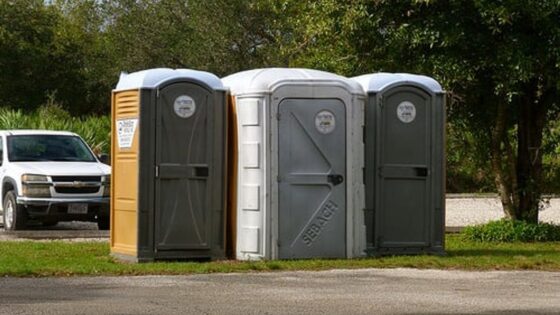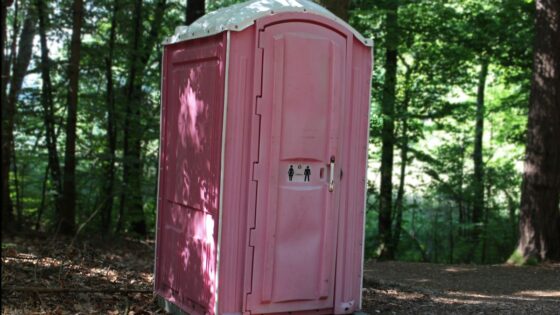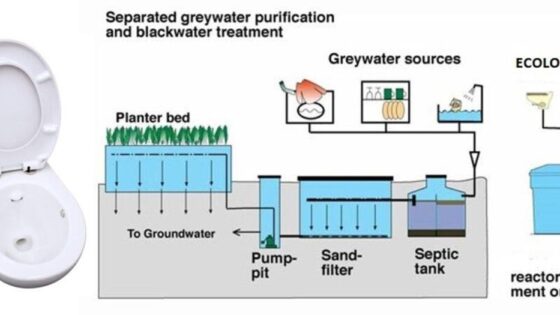Why You Should Care About Construction Site Sanitation
The Gross Factor: Germs and Grime
Construction sites can get really dirty. Think about all the mud, dust, and who-knows-what-else. Germs love dirty places. If workers don’t keep things clean, they can get sick. And nobody wants to work next to a pile of grime.
Health Risks You Didn’t Know About
Did you know that a dirty site can cause more than just a bad smell? Workers can get skin infections, stomach bugs, and even lung problems. Keeping the site clean helps everyone stay healthy and on the job.
Happy Workers, Happy Site
When the site is clean, workers are happier. They don’t have to worry about getting sick or dealing with gross stuff. A clean site means a better mood and more work getting done. It’s a win-win for everyone.
A clean construction site isn’t just nice to look at—it’s safer and healthier for everyone involved.
Porta-Potty Chronicles: The Good, The Bad, and The Ugly
The Necessary Evil
Porta-potties are a must on construction sites. They might not be glamorous, but they get the job done. Without them, workers would have nowhere to go. Imagine the mess! So, while they might not be fun, they are essential.
Maintenance Nightmares
Keeping porta-potties clean is a big job. If they aren’t cleaned often, they can get really gross. Bad smells and germs can make workers sick. Regular cleaning is a must to keep everyone healthy and happy.
How to Make Them Less Gross
There are ways to make porta-potties better. First, clean them often. Second, add hand sanitizer inside. Third, make sure they are well-stocked with toilet paper. These small steps can make a big difference.
A clean porta-potty is a happy porta-potty. Regular maintenance keeps the stink away and the germs at bay.
Handwashing Stations: Your New Best Friend
Why Soap and Water Matter
Handwashing stations are a game-changer on construction sites. Clean hands mean fewer sick days and a healthier crew. Germs spread fast, but soap and water can stop them in their tracks. It’s a simple habit that makes a big difference.
DIY Handwashing Hacks
No fancy setup? No problem! You can make a handwashing station with a water jug, some soap, and paper towels. Just make sure it’s easy to use and always stocked. A little creativity goes a long way in keeping hands clean.
Keeping It Stocked and Clean
A handwashing station is only good if it’s maintained. Check it daily to make sure there’s enough soap, water, and paper towels. Empty the trash regularly to keep things tidy. A clean station encourages everyone to use it, keeping the whole site healthier.
Handwashing stations are a small investment for a big payoff in worker health and site cleanliness.
Lunch Breaks and Clean Spaces: A Love Story
The Perils of Eating on a Dirty Site
Eating on a dirty construction site is like playing with fire. Germs and dirt can easily get into your food, making you sick. Imagine munching on your sandwich and getting a mouthful of dust. Yuck! It’s not just gross; it’s dangerous.
Setting Up a Clean Eating Area
Creating a clean eating area is easier than you think. Follow these simple steps:
- Find a spot away from the work zone.
- Lay down a clean tarp or tablecloth.
- Set up a small trash can nearby.
- Keep hand sanitizer handy.
Food Safety Tips for the Job Site
Keeping your food safe on the job site is crucial. Here are some tips:
- Always wash your hands before eating.
- Use insulated lunch boxes to keep food at the right temperature.
- Avoid leaving food out in the open.
- Label your food to avoid mix-ups.
A clean eating area isn’t just nice to have; it’s a must for staying healthy on the job. Take a few minutes to set it up, and your stomach will thank you.
Trash Talk: Managing Waste on the Job
Sorting It Out: Trash vs. Recyclables
Ever wonder where all that trash goes? On a construction site, it’s super important to sort out the trash from the recyclables. Mixing them up can cause big problems. Think of it like sorting your laundry—whites in one pile, colors in another. Easy, right?
Hazardous Waste 101
Not all trash is created equal. Some of it is downright dangerous. Hazardous waste needs special handling. We’re talking about stuff like old paint, chemicals, and batteries. If you don’t handle it right, it can hurt people and the environment. So, always follow the rules for hazardous waste.
Keeping the Site Tidy
A clean site is a happy site. When trash piles up, it can get in the way and even cause accidents. Make sure there are enough trash bins around and that they’re emptied regularly. Nobody likes working in a mess. Plus, a tidy site makes it easier to find your tools and get the job done faster.
Keeping the site clean isn’t just about looks. It’s about safety and efficiency. A well-managed site is a productive site.
Gear Up: Personal Protective Equipment and Sanitation
Clean Gear, Safe Gear
Keeping your gear clean is super important. Dirty gear can be dangerous. Imagine wearing a helmet full of grime or gloves that are sticky. Yuck! Clean gear means safe gear, so make sure to wash and check your equipment often.
Disinfecting Your PPE
Disinfecting your Personal Protective Equipment (PPE) is a must. Germs can hide in your gear and make you sick. Use wipes or sprays to clean your helmet, gloves, and other gear. Do this every day to keep the germs away.
Storage Solutions for Your Equipment
Storing your gear the right way keeps it clean and ready to use. Use hooks, shelves, or bins to keep everything in its place. Organized gear is easier to find and stays cleaner longer. Plus, it makes the site look neat and tidy.
Clean gear isn’t just nice to have—it’s a must for staying safe on the job.
The Role of Management in Site Sanitation
Training Workers on Sanitation
Management needs to teach workers about keeping the site clean. This means showing them how to wash their hands, use porta-potties right, and throw away trash. Good training keeps everyone safe and healthy.
Regular Inspections and Audits
Managers should check the site often to make sure it’s clean. They can make a list of things to look for, like full trash cans or dirty handwashing stations. Regular checks help catch problems early.
Leading by Example
Bosses should also follow the rules they set. If workers see their managers keeping things clean, they are more likely to do the same. Actions speak louder than words.
A clean site is a safe site. When everyone pitches in, the job gets done better and faster.









